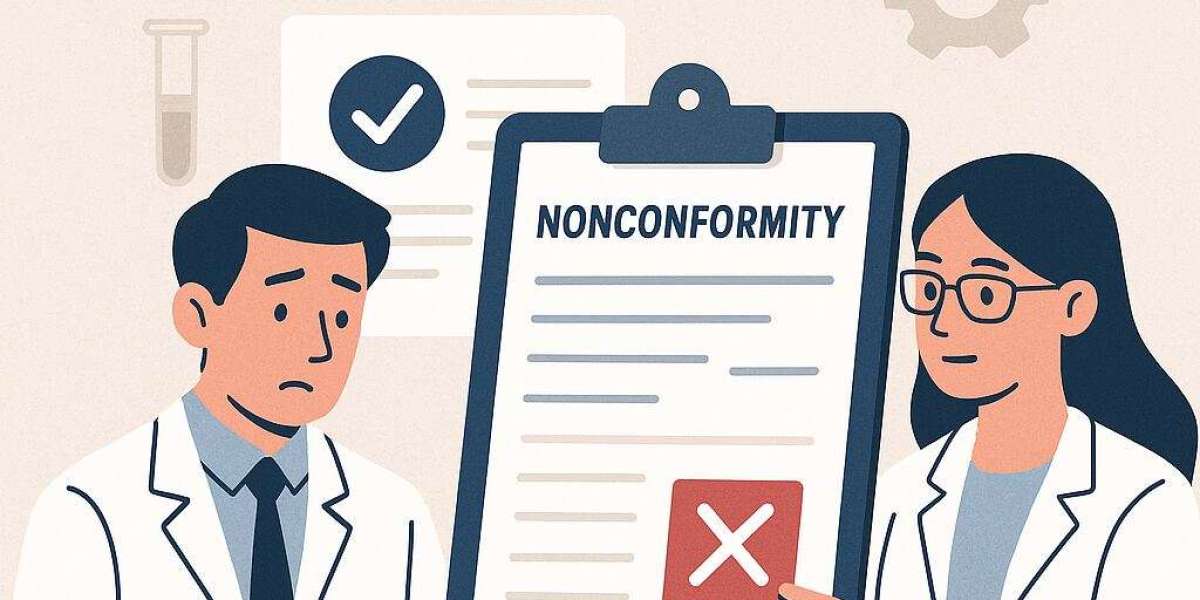In the highly regulated environment of medical laboratories, maintaining accuracy, reliability, and compliance is non-negotiable. The ISO 15189 standard, specifically designed for medical laboratories, sets requirements for quality and competence. One of the most critical elements in this standard is the proper handling and documentation of nonconformities. A nonconformity occurs when a process, result, or practice fails to meet the established requirements, whether they stem from internal policies, regulatory guidelines, or the ISO 15189 standard itself.
The way laboratories identify, report, and document nonconformities plays a pivotal role in ensuring continual improvement, safeguarding patient safety, and maintaining accreditation status. This article explores the essentials of nonconformity reporting, the documentation process, and best practices to align with ISO 15189 requirements.
Understanding Nonconformities in ISO 15189
Nonconformities can arise in several areas, including test results, laboratory processes, equipment performance, sample handling, or even personnel competence. Examples include incorrect patient identification, use of expired reagents, incomplete records, failure to meet turnaround times, or deviations from established methods.
Identifying a nonconformity is the first step toward corrective action. It’s essential for laboratories to foster a culture where reporting such issues is encouraged and not perceived as punitive. This ensures that errors are addressed early, preventing recurrence and maintaining the integrity of laboratory services.
Purpose of Nonconformity Reports
Nonconformity reports serve as a structured method to capture details of the issue, analyse root causes, and define corrective actions. They act as a bridge between problem identification and resolution. Key purposes include:
- Traceability: Ensuring that any deviation is recorded with clear details for future reference.
- Root Cause Analysis: Providing a foundation for investigating the reason behind the failure.
- Corrective Action Tracking: Monitoring the progress and effectiveness of corrective measures.
- Accreditation Compliance: Demonstrating to assessors that the laboratory systematically manages quality issues.
The Role of Documentation in ISO 15189 Compliance
Accrediting bodies require not just the implementation of a corrective action system, but also evidence that it is functioning effectively. This is where documentation becomes vital. Nonconformity documentation provides proof that the laboratory has an organized approach to handling quality issues.
Good documentation ensures:
- Consistency: Every nonconformity is recorded and processed uniformly.
- Accountability: Staff responsibilities are clearly defined.
- Evidence for Audits: Assessors can review the lifecycle of each nonconformity during audits.
- Learning Opportunities: Historical records can be used to train staff and improve processes.
When maintained properly, iso 15189 documentation related to nonconformities becomes an indispensable resource during both internal and external audits.
Steps to Document Nonconformities Effectively
- Immediate Reporting: As soon as a deviation is identified, staff should log it without delay.
- Use of Standardized Forms: Predefined templates help capture all necessary details consistently.
- Factual Recording: Avoid opinions or blame; focus on verifiable facts.
- Link to Related Documents: Reference relevant SOPs, quality manuals, or test records.
- Digital Systems: Laboratory Information Management Systems (LIMS) can streamline reporting and tracking.
- Follow-Up and Closure: Ensure that every recorded nonconformity has a documented resolution and verification step.
Best Practices for Laboratory Teams
- Promote a Non-Punitive Reporting Culture: Encourage staff to see nonconformity reporting as a positive quality improvement step.
- Regular Review Meetings: Use nonconformity logs in management reviews to identify trends.
- Integrate with Continuous Improvement: Link nonconformity resolution to broader quality initiatives.
- Leverage Technology: Use software solutions to automate notifications, reminders, and data analysis.
Conclusion
Nonconformity reports are more than just paperwork—they are essential tools for quality assurance in medical laboratories. By documenting every deviation with accuracy and consistency, laboratories not only comply with ISO 15189 but also enhance their service reliability and patient safety. The process ensures that issues are not just fixed temporarily but addressed at the root to prevent recurrence.
When nonconformities are managed with a structured approach and backed by strong documentation practices, laboratories can maintain their accreditation with confidence and demonstrate their commitment to continual improvement.



